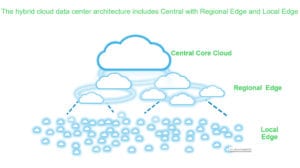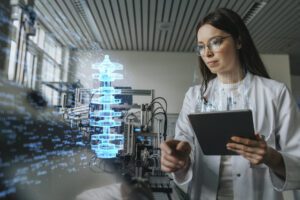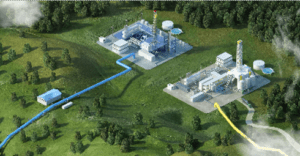 After a year that started with the strongest pandemic in more than 100 years which had the impact of dropping oil prices into negative values, we’ve been seeing a slight recovery and a refreshing breeze. Oil price recently reached over $60 USD, starting to re-animate the upstream business again.
After a year that started with the strongest pandemic in more than 100 years which had the impact of dropping oil prices into negative values, we’ve been seeing a slight recovery and a refreshing breeze. Oil price recently reached over $60 USD, starting to re-animate the upstream business again.
Access to capital, public image, corporate resiliency, workforce efficiency, portfolio diversification, TOTEX reduction and the shift to renewables are not new challenges to the industry, but 2020 amplified the demands of the stake-holders in upstream onshore exploration and production.
So, what is the answer to the acceleration of these challenges? The energy transition to a cleaner and sustainable energy matrix. Digital transformation that enables improved ROI, sustainability, and an evolving workforce.
Digital transformation is the key to reach CAPEX and OPEX optimization, uptime and to reduce time to 1st oil. And the digital solutions put in place to optimize operations and increase yield also increase efficiency and use less resources which support sustainability efforts. All of the above appeal to a new generation of digitally capable and environmentally conscious workers as well as offer increased agility and flexibility to the potential need of remote workers. At the end of the day, digitalization is addressing the key needs of the upstream market to deliver greater energy and process efficiency.
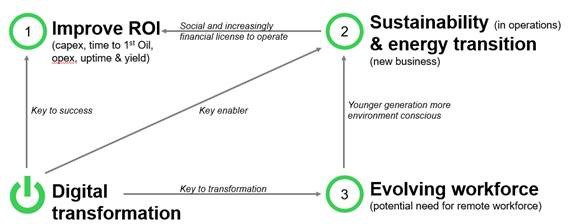
Being more energy and process efficient: move away from experience and intuition to data and analysis
Empowering the workforce, through complete coverage of the asset lifecycle, to make data-driven decisions that reduce risk, improve operational performance and optimize production throughout the entire project and asset lifecycle will enable upstream operators to keep pace with the demands placed on the industry.
Data-driven decision making is defined not only by collecting data, but also by how and if it is used in making crucial decisions. It means being able to analyze any asset for real performance compared to the expected or most optimized performance and having the right information to define the best time for maintenance throughout the operating life. Also, being able to determine “what good looks like” so you know how to operate and maintain that equipment for optimum performance.
Going further with data driven analysis, the use of AI machine learning concept allows failure predictive analysis. That means, prediction of possible failures based on the equipment conditions of operations or performance. The use of an intelligent algorithm analyzing the data, can provide earlier alerts when performance is starting to deviate or deteriorate and will avoid costly failures.
EcoStruxure solutions allow connectivity everywhere, power & process integration, and a TOTEX approach. Think differently with a total expenditure (TOTEX) approach.

So, what is a total expenditure (TOTEX) approach?
It is about spending money to achieve outcomes regardless of its CAPEX or OPEX. It is about looking at the long-term value to investment decisions. This is the foundation of the approach we call EcoStruxure Power and Process, which breaks down silos and delivers Realtime information of common assets. Electrical power management and process automation have long been designed and operated independently, but IoT and digitalization have enabled a level of connectivity to manage these two domains differently in the future. To boost efficiencies and cut costs, Oil, Gas, and Petrochemical companies have begun to consolidate their automation and electrical operations.
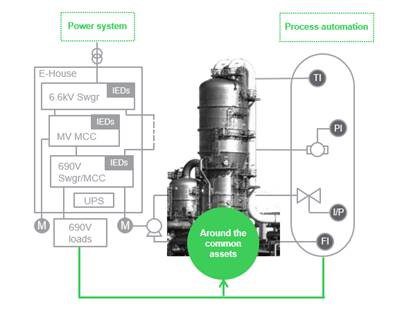
How about decarbonization?
You probably heard that a key driver for decarbonization is electrification. But to be successful, we need power availability, power reliability and power quality, which only can be achieved with a secure source of energy and an energy efficient monitoring & control system, using existing technologies, from sensors to predictive maintenance, machine learning applications and the use of power advisors. This enables failure prediction and availability of real-time and reliable information for better operational decisions. The creation of micro grids with digital intelligence to assure quality and reliable power. The use of clean energy like solar and wind will create the path to reduce emissions. But going into decarbonization is much more than this. We have to plan our future operations, going from low emissions operation to Net Zero Facilities.
You can start by planning your future asset:
- Feed studies to build & deploy CO2 assessment methodology.
- Negotiate power purchase agreements for renewable electricity sourcing.
- Ensure secure power for emergency situations with UPS and BESS (batteries energy storage systems).
- Develop your digital plan with remote operations leveraging digital twin for controls and asset performance management.
- Define CO2 emissions targets, looking at UN Sustainable Development Goal 13 (Climate Action). Clearly setting your sustainability KPIs and develop a sustainability performance tracking monitor
Leveraging the best of Power, Process and Digital Solutions to enable the transition to more efficient, sustainable and profitable operations.
How digitalization and IA technology are already helping performance?
EcoStruxure Autonomous Production Advisor (EAPA)
An integrated end-to-end approach to field operations. Process efficiency through digitalization by adopting flexible optimization strategies focusing on asset lifetime, environmental impact and operation costs. In other words, lower your total cost of ownership.
If we look to well head and artificial lift applications
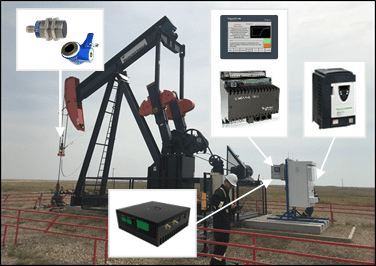
The use of IA and machine learning solution to:
- Actively manage the asset lifetime to optimize well intervention schedules
- Optimize the production of the wells by reducing unplanned downtime as well as maximizing oil volumes
- Capture and automate expertise from senior operators through Artificial Intelligence
Applying this technology using EcoStruxure Autonomous Production Advisor (EAPA)
- Provides integration between legacy well site automation technologies, edge computing, cloud and AI to unlock business value
- Optimize operations costs through full remote and/or autonomous operations
- Increase equipment lifetime and production by detecting and predicting abnormal operating conditions (including production issues) through Machine Learning algorithms and workflows
- Capture expertise and precious domain knowledge by training Machine Learning models
- Reduction of environmental footprint through optimized energy consumption, windshield time reduction and abnormal event avoidance
The Oil&Gas industry is in a huge transformation: to a more efficient, resilient, cleaner, sustainable and people focused. At Schneider Electric, our purpose is to empower all to make the most of our energy and resources bridging progress and sustainability for all. We call this . Our mission is to be your digital partner for Sustainability and Efficiency. Drive your business transformation by integrating world-class process and energy technologies, endpoint-to-cloud connected products, controls, software, and services across the entire lifecycle.
Leveraging the best of Power, Process and Digital, Schneider Electric’s energy management and automation solutions, combined with AVEVA’s integrated data platform and leading-edge industrial software, we are enabling energy companies to harness the power of information, AI, and human insight to drive efficient, sustainable performance. Realize your vision to increase profitability and minimize risk, while empowering your people through connected capabilities and technologies. Explore more on our Netzero initiative here.
